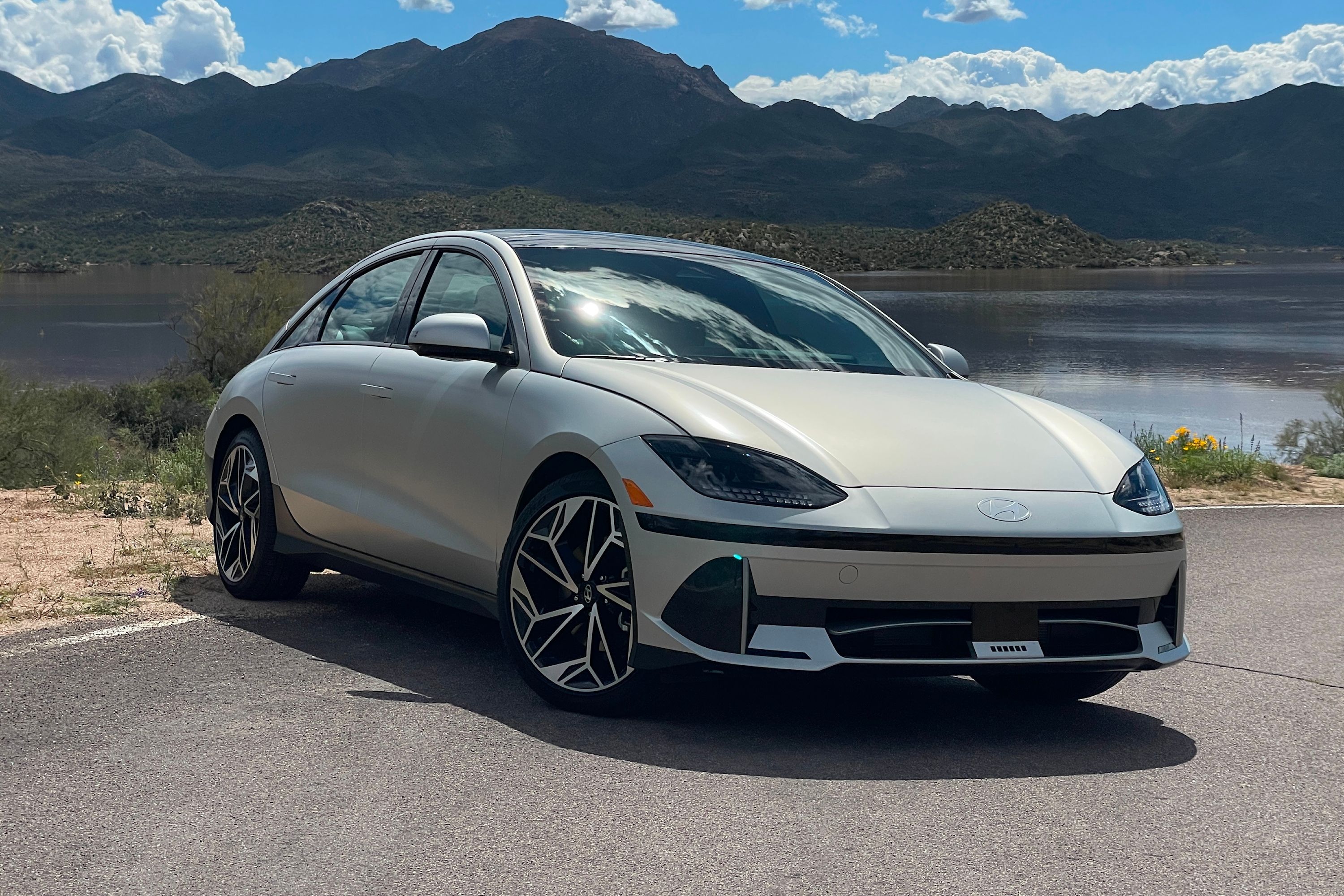
The Hyundai Ioniq 6 electric sedan has completed its final EPA testing, achieving class-leading range figures of up to 361 miles in SE RWD Long Range specification (18-inch wheels). It achieves an MPGe rating of 140, matching the Lucid Air Pure AWD and Touring AWD as the EPA's most efficient EVs. Notably, the EPA-confirmed range is 21 miles further than the original estimates from Hyundai.
The rest of the Ioniq 6 lineup is equally impressive. The worst EPA figures come from the SEL AWD and Limited AWD trims (20-inch wheels), which manage 270 miles on a charge at 103 MPGe. The SEL RWD and Limited RWD increase range to 305 miles at 117 MPGe, while the SE AWD Long Range manages 316 miles at 121 MPGe.
Long Range options utilize a 77.4-kWh battery (53 kWh standard), with single-motor RWD derivatives generating 225 horsepower and dual-motor AWD models developing 320 hp.
This efficiency is then backed up by an 800-volt E-GMP architecture that is capable of charging from 10-80% in only 18 minutes with a 350kW charger. The impressive range figures can be attributed in large part to its truly ultra-low drag coefficient of 0.22 thanks to trick aerodynamics.
But how do rivals stack up?
Tesla Model 3
Tesla was once considered the king of EV range, but the best Model 3 - the Long Range AWD - manages only 358 miles on a charge. Notably, it is AWD by default and has better acceleration and more power. The only RWD Model 3 available utilizes Tesla's standard range battery pack, managing only 272 miles - again falling behind the Ioniq 6. However, the Model 3 Performance has pace the Ioniq 6 can't match, with a 0-60 mph time of 3.1 seconds, but will only manage 315 miles on a charge.
Even with its most recent price cuts, the Model 3 won't be much cheaper than the Ioniq 6. While the Hyundai's pricing hasn't yet been confirmed, it is expected to start in the $44,000 region, while the Model 3 starts at $43,990 for the 272-mile RWD model. The Model 3 Performance, meanwhile, has an MSRP of $53,990.
Polestar 2
The only other electric sedan in the same segment as the Ioniq 6 is the Polestar 2, which receives a massive update for the 2024 model year. While that will see FWD derivatives replaced by RWD options, and more power across the entire lineup, the 2023 variant is the one Ioniq 6 buyers will immediately cross-shop. For the current year, the Polestar 2 is more expensive (starting at $49,800) but can't match the Ioniq 6's range. Single-motor RWD variants manage 270 miles, according to the EPA, while the dual-motor variant will only hit 260 miles. Even the 2024 updates won't see the Polestar take the lead, as the single-motor variant is bumped to 300 miles and the dual-motor to 270.
The Polestar even uses a larger battery, with the 2024 single-motor model boasting 82 kWh of capacity.
Indirect Competition: BMW, Ford, Volkswagen, Lucid
With only two electric sedans to rival the Ioniq 6, some buyers may cross-shop popular electric crossovers or sedans from a slightly different category.
To that end, the BMW i4 has a maximum range of 301 miles in eDrive40 guise, with a price of $57,100. A cheaper eDrive35 model is coming (single-motor, 282 hp) at $52,000 but is only estimated at 260 miles of range. At the other end of the size and price spectrum, Lucid is the current title holder, with up to 520 miles attainable by the Air Dream Edition, albeit at more than $150,000. VW's forthcoming ID.7 has a claimed WLTP range of 435 miles, but EPA testing is far more stringent.
On the crossover side of things - which is favored by many EV manufacturers - the Mustang Mach-E's best EPA figures are 314 miles on a charge for the RWD California Route 1, while the RWD Extended Range variant manages up to 303 miles. The best the VW ID.4 can manage is 275 miles in ID.4 Pro RWD guise.
